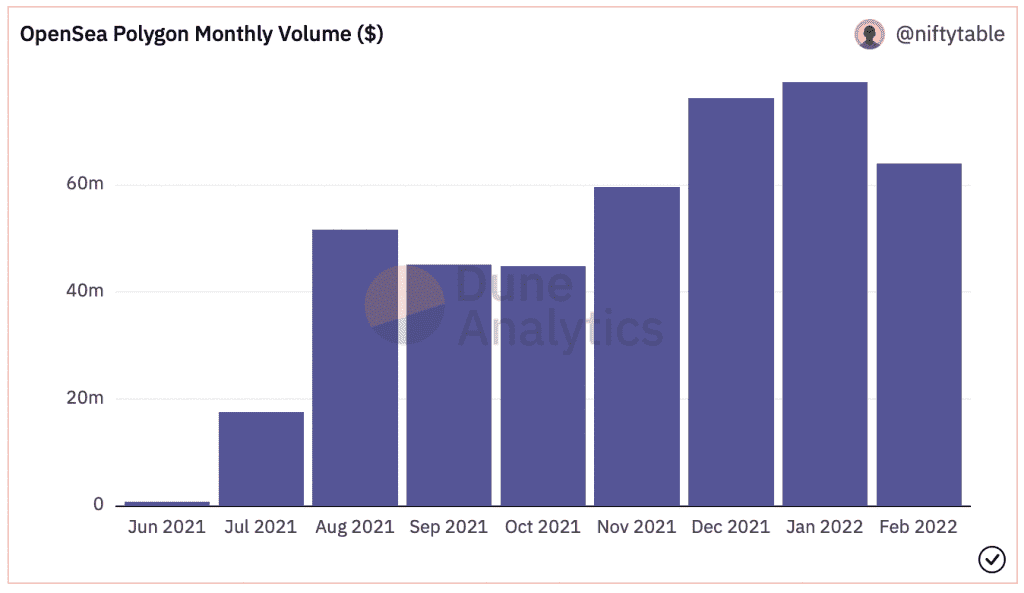As each day goes by, the NFT market is growing and taking up more of the limelight. As February 2022 draws to an end, it’s a good time to check on the progress of OpenSea – but this time, from the Polygon side.
New trends taking shape?
OpenSea [Polygon] saw some impressive stats in January, but February’s monthly trading volume of $63,977,958.866390646 failed to sustain the record-breaking momentum of the last two months.
Source: Dune Analytics
What’s more, we can see that daily volume has been on a downward trend since about 14 February.

Source: Dune Analytics
Adding to that, 1,738,012 NFTs were sold on OpenSea [Polygon] in February, compared to 2,685,757 NFTs in January.
OpenSea [Ethereum] saw similar trends taking place, as the month was marred by the OpenSea exploit and on a larger scale, Russia’s invasion of Ukraine.
Painful profits for AP
The situation might be tense within the NFT sector, but that also seems to be the case outside it. A large section of non-crypto users still believes that all NFTs – regardless of where they get minted – are exploitative or harm the environment.
An example of this came to light when the international news agency Associated Press [AP] had to backtrack on its plans to launch an NFT that featured a picture of a boat on the sea filled with migrants. Journalists criticized the move and accused AP of trying to make profits from the struggles of vulnerable people.
In a statement, AP said,
“AP’s NFT marketplace is a very early pilot program, and we are immediately reviewing our efforts.”
Crypto investors and traders might be interested to note that AP planned to mint its NFTs on Polygon, which it described as an “environmentally friendly, Ethereum-compatible layer two solution.”
Polygon vs Pandas
This isn’t the first time Polygon’s eco-friendly quotient has been called into question. Earlier this month, the World Wildlife Fund was hit with backlash over its “tokens for nature” project involving NFTs minted on the Polygon blockchain. WWF later announced that it had received a lot of feedback and was reviewing its decision.
Those who are conscious about the environmental footprint of blockchains feel that even being “Ethereum compatible” is a way of promoting an energy-intensive proof-of-work blockchain.


